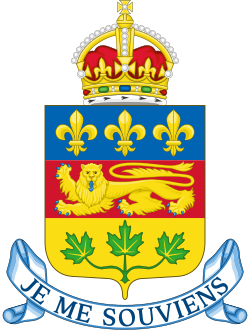| History of Quebec |
|---|
 |
| Timeline |
| Territory of Quebec |
|
| Topics |
| |
This section of the timeline of Quebec history concerns the events between the fall of Quebec as part of New France during the French and Indian Wars and as part of British North America, through the adoption of the Quebec Act (1774), until just before the division of the province into Upper and Lower Canada by the Constitutional Act (1791).